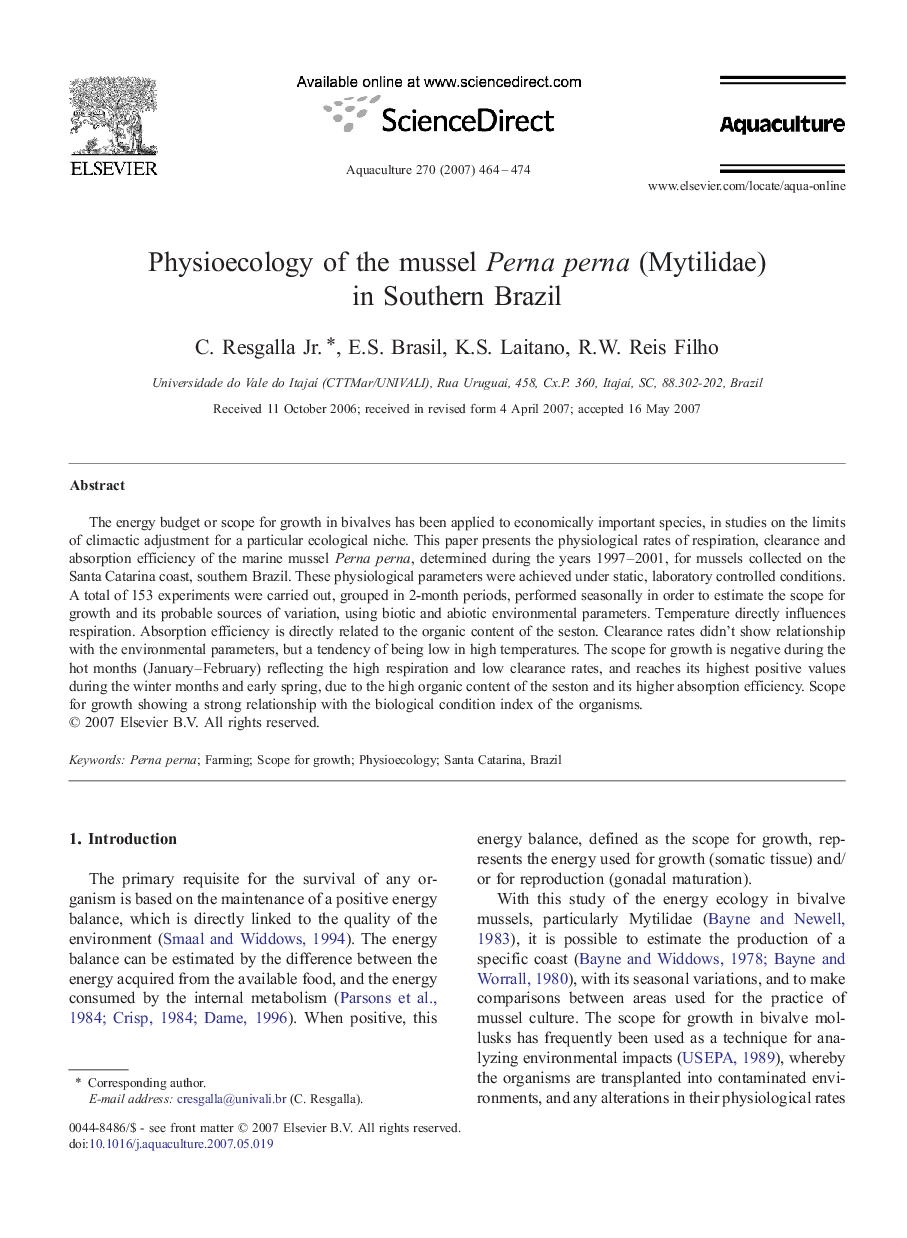| Article ID | Journal | Published Year | Pages | File Type |
|---|---|---|---|---|
| 2425070 | Aquaculture | 2007 | 11 Pages |
The energy budget or scope for growth in bivalves has been applied to economically important species, in studies on the limits of climactic adjustment for a particular ecological niche. This paper presents the physiological rates of respiration, clearance and absorption efficiency of the marine mussel Perna perna, determined during the years 1997–2001, for mussels collected on the Santa Catarina coast, southern Brazil. These physiological parameters were achieved under static, laboratory controlled conditions. A total of 153 experiments were carried out, grouped in 2-month periods, performed seasonally in order to estimate the scope for growth and its probable sources of variation, using biotic and abiotic environmental parameters. Temperature directly influences respiration. Absorption efficiency is directly related to the organic content of the seston. Clearance rates didn't show relationship with the environmental parameters, but a tendency of being low in high temperatures. The scope for growth is negative during the hot months (January–February) reflecting the high respiration and low clearance rates, and reaches its highest positive values during the winter months and early spring, due to the high organic content of the seston and its higher absorption efficiency. Scope for growth showing a strong relationship with the biological condition index of the organisms.
